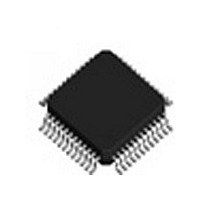IDTSTAC9758XXTAEB1XR IDT, Integrated Device Technology Inc, IDTSTAC9758XXTAEB1XR Datasheet - Page 81

IDTSTAC9758XXTAEB1XR
Manufacturer Part Number
IDTSTAC9758XXTAEB1XR
Description
IC CODEC AC'97 6CH 2.3 48-TQFP
Manufacturer
IDT, Integrated Device Technology Inc
Type
Audio Codec '97r
Datasheet
1.IDTSTAC9758XXTAEB1XR.pdf
(119 pages)
Specifications of IDTSTAC9758XXTAEB1XR
Data Interface
Serial
Resolution (bits)
20 b
Number Of Adcs / Dacs
2 / 3
Sigma Delta
Yes
Voltage - Supply, Analog
3.14 V ~ 3.47 V; 4.75 V ~ 5.25 V
Voltage - Supply, Digital
3.14 V ~ 3.47 V
Operating Temperature
0°C ~ 70°C
Mounting Type
Surface Mount
Package / Case
48-TQFP, 48-VQFP
Single Supply Voltage (typ)
3.3/5V
Single Supply Voltage (min)
3.135V
Single Supply Voltage (max)
3.465/5.25V
Package Type
TQFP
Lead Free Status / RoHS Status
Lead free / RoHS Compliant
Other names
STAC9758XXTAEB1XR
Available stocks
Company
Part Number
Manufacturer
Quantity
Price
Company:
Part Number:
IDTSTAC9758XXTAEB1XR
Manufacturer:
IDT, Integrated Device Technology Inc
Quantity:
10 000
IDT™
HIGH-PERFORMANCE 6-CHANNEL AC’97 2.3 CODEC WITH UNIVERSAL JACKS™
STAC9758/9759
HIGH-PERFORMANCE 6-CHANNEL AC’97 2.3 CODEC WITH UNIVERSAL JACKS™
8.4.
General Purpose Input & Outputs
8.4.1.
8.4.2.
8.4.3.
EAPD
EAPD can act as a GPIO, but is unaffected by the following registers. To use EAPD as a GPIO, use
Register 74h, the EAPD Access Register located in Section 8.6.19: page102. Additional informa-
tion about EAPD can also be found in Section 8.2.19.3: page71.
GPIO Pin Definitions
GPIO pins are programmable to have input/output functionality. The data values (status) for these
pins are all in one register with input/output configuration in a separate register. Control of GPIO pins
configured for output is achieved by setting the corresponding bit in output slot 12; status of GPIO
pins configured for input is returned on input slot 12. The CODEC must constantly set the GPIO pins
that are configured for output, based upon the value of the corresponding bit position of the control
slot 12. The CODEC should ignore output slot 12 bits that correspond to GPIO control pins config-
ured as inputs. The CODEC must constantly update status on input slot 12, based upon the logic
level detected at each GPIO pin configured for input. A GPIO output pin value that is written via slot
12 in the current frame won’t affect the GPIO status that is returned in that particular write frame.
This slot 12-based control/status protocol minimizes the latency and complexity, especially for
host-based Controllers and host data pump software, and provides high speed monitoring and con-
trol, above what could be achieved with command/status slots. For host-based implementations,
most AC‘97 registers can be shadowed by the driver in order to provide immediate response when
read by the processor, and GPIO pins configured as inputs should be capable of triggering an inter-
rupt upon a change of status.
The AC-Link request for GPIO pin status is always delayed by at least one frame time. Read-Mod-
ify-Writes across the AC-Link will thus incur latency issues and must be accounted for by the soft-
ware driver or AC‘97 Digital Controller firmware. PCI retries should be kept to a minimum wherever
possible.
GPIO Pin Implementation
The GPIOs are set to a high impedance state on power-on or a cold reset. It is up to the AC‘97 Digi-
tal Controller to first enable the output after setting it to the desired state. GPIO0 and GPIO1 are on
pins 33 and 34 (respectively) and are powered from the analog supply. When using these pins in an
application, care must be taken to reduce the risk of injecting noise into the analog section. Also,
GPIO0 and GPIO1 will not be available when the analog supply is removed.
81
STAC9758/9759
PC AUDIO
V 1.2 1206
















